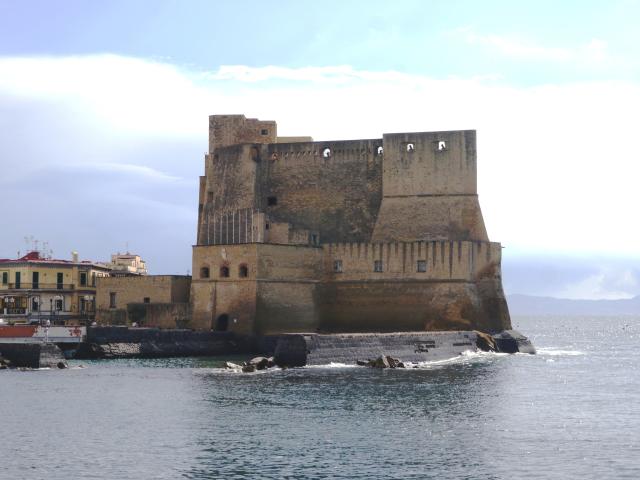Castel dell'Ovo

Prison, seat of the treasury and royal residence, where Alfonso V the Magnanimous died on June 27, 1458.
Via Eldorado, 3
80132 - NaplesCastel dell'Ovo, raised on a rocky islet, is the oldest in the city of Naples. Its name has been linked to various legends from Roman times, although reality leads us to its particular egg shape.
Some monks settled on this natural islet at the end of the 5th century, who began human settlement in the place. In the 12th century there is already evidence of a fortress occupying the space and, in the 13th century, Frederick II converted the castle into the seat of the treasury, royal palace and prison.
Charles I of Anjou moved the court to Castel Nuovo, but maintained the rest of the functions. In the prison he is imprisoned Conradin of Hohenstaufen, before being beheaded in the Piazza del Mercato on October 29, 1268.
The conquest of Naples by Alfonso V the Magnanimous produced new renovations, enriching the royal palace, restoring the dock, enhancing the defensive structures and lowering the towers.
During the reign of the Spanish viceroys and the Bourbons, the castle was fortified with batteries and drawbridges. Its structure completely lost the function of a royal residence.
Crossing the Normandy tower, you access the only internal path that leads to the remains of the church of San Salvatore and the rest of the rooms, including the Hall of Columns, the Hall of Prisons and the Sala Italia, the largest of all.
From the various terraces there is a complete view of the Gulf of Naples.
It was here that Alfonso V the Magnanimous died on June 27, 1458.
Virginio, the powerful chief of the Orsini, who had allied himself with the French during the 1494 invasion, whose family had tried to depose Alexander VI, was imprisoned in the fortress with the approval of the Pope and died of poison on January 8, 1497.


